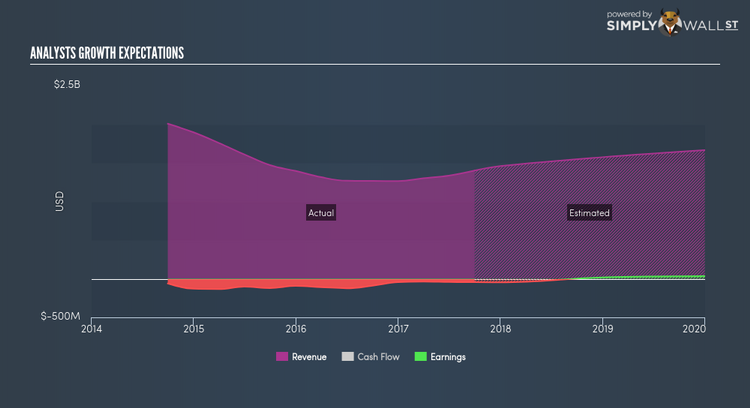Have Investors Already Priced In Titan International Inc’s (NYSE:TWI) Growth?

Titan International Inc (NYSE:TWI), a machinery company based in United States, saw significant share price volatility over the past couple of months on the NYSE, rising to the highs of $13.95 and falling to the lows of $11.59. This high level of volatility gives investors the opportunity to enter into the stock, and potentially buy at an artificially low price. A question to answer is whether Titan International’s current trading price of $11.95 reflective of the actual value of the small-cap? Or is it currently undervalued, providing us with the opportunity to buy? Let’s take a look at Titan International’s outlook and value based on the most recent financial data to see if there are any catalysts for a price change. View our latest analysis for Titan International
Is Titan International still cheap?
According to my relative valuation model, the stock seems to be currently fairly priced. I’ve used the price-to-book ratio in this instance because there’s not enough visibility to forecast its cash flows, and its earnings doesn’t seem to reflect its true value. The stock’s ratio of 2x is currently trading slightly below its industry peers’ ratio of 2.7x, which means if you buy Titan International today, you’d be paying a relatively fair price for it. And if you believe that Titan International should be trading at this level in the long run, then there’s not much of an upside to gain from mispricing. Is there another opportunity to buy low in the future? Since Titan International’s share price is quite volatile, we could potentially see it sink lower (or rise higher) in the future, giving us another chance to buy. This is based on its high beta, which is a good indicator for how much the stock moves relative to the rest of the market.
What does the future of Titan International look like?
Future outlook is an important aspect when you’re looking at buying a stock, especially if you are an investor looking for growth in your portfolio. Buying a great company with a robust outlook at a cheap price is always a good investment, so let’s also take a look at the company’s future expectations. With revenues expected to grow by a double-digit 17.29% over the next couple of years, the outlook is positive for Titan International. If the level of expenses is able to be maintained, it looks like higher cash flows is on the cards for the stock, which should feed into a higher share valuation.
What this means for you:
Are you a shareholder? TWI’s optimistic future growth appears to have been factored into the current share price, with shares trading around its fair value. However, there are also other important factors which we haven’t considered today, such as the financial strength of the company. Have these factors changed since the last time you looked at TWI? Will you have enough conviction to buy should the price fluctuates below the true value?
Are you a potential investor? If you’ve been keeping an eye on TWI, now may not be the most advantageous time to buy, given it is trading around its fair value. However, the positive outlook is encouraging for TWI, which means it’s worth further examining other factors such as the strength of its balance sheet, in order to take advantage of the next price drop.
Price is just the tip of the iceberg. Dig deeper into what truly matters – the fundamentals – before you make a decision on Titan International. You can find everything you need to know about Titan International in the latest infographic research report. If you are no longer interested in Titan International, you can use our free platform to see my list of over 50 other stocks with a high growth potential.
To help readers see pass the short term volatility of the financial market, we aim to bring you a long-term focused research analysis purely driven by fundamental data. Note that our analysis does not factor in the latest price sensitive company announcements.
The author is an independent contributor and at the time of publication had no position in the stocks mentioned.

